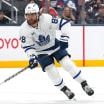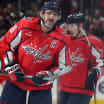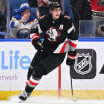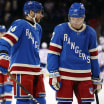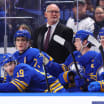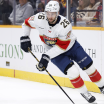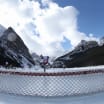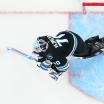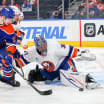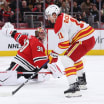As the NHL embarks on another season, the line between the next generation and the now generation in the League has never been thinner.
"We could be in the best era ever of highly skilled hockey players coming out in the drafts," said Nashville Predators general manager David Poile, whose time in the NHL totals more than four decades.
Youth movement takes hold in NHL
Influx of young, fast, talented players making mark on League
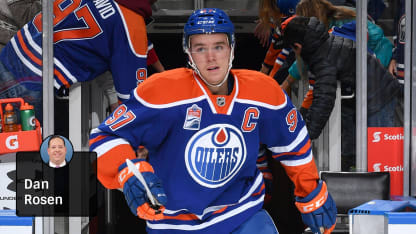
© Andy Devlin/Getty Images
The skill in the young players shows up in skating, which Poile said has never been emphasized more. Size, he added, used to be a big factor, but now players like Calgary Flames forward Johnny Gaudreau (5-foot-9, 157 pounds) and Philadelphia Flyers defenseman Shayne Gostisbehere (5-11, 180 pounds) are among the best in the game at their respective positions.
"That's the modern NHL," Gostisbehere said. "It's all about speed. You don't see a lot of big guys out there, and if you do they can skate and stickhandle."
All of this was embodied in Team North America at the World Cup of Hockey 2016. The 23 North American players, all 23 years old or younger, played a fast, fearless and fun brand of hockey. They were skilled and made opponents dizzy with their speed.
And it was a team filled with potential leaders, including Edmonton Oilers center Connor McDavid, who became the youngest captain in the history of the NHL at 19 years, 266 days on Oct. 5. He's already a top-10 player, arguably top-five.
There are dozens of more examples across the League of young players who are having as big of an impact now as players in their late 20s and early 30s. It's not a coincidence, and the numbers back it up.
There were 234 players aged 25 or younger who played in season opening games last season compared to 220 in the 2011-12 season and 180 in 2006-07, according to the Elias Sports Bureau.
Among the most notable such players this season are 19-year-old Auston Matthews of the Toronto Maple Leafs and 18-year-old Patrik Laine of the Winnipeg Jets, selected first and second, respectively, in the 2016 NHL Draft.
"This generation of kids is now the post-'04-'05 lockout kids," NHL Network analyst and former NHL forward Mike Johnson said. "They are the kids who were 8-10 years old coming out of the '04-'05 lockout, so they were not taught growing up that if you want to make the NHL you have to learn how to hook, hold, cross check and maybe fight, and if you're not 6-foot-2, you're not going to have a very good chance.
"They saw Marty St. Louis be a dominant player so they thought, 'I could make the NHL just fine without having to be a pest, rat, irritant. I can just be there with skill and speed, because the game is now being refereed and played in a way that I can be successful with my physical size.' I think that's part of it, they've come from that generation.
"They haven't been infected by the defensive mindset of coaching."
Johnson speaks from experience. He arrived in the NHL in 1997, when clutching and grabbing was not only allowed, it was coached.
The young players coming into the League have learned to play under the new rules, which prohibit clutching and grabbing and are meant to foster more of an open ice game.
It helps their maturity and preparation is accelerated because of specialized coaching, Johnson said. He noted that for a long time, many of the top young players have had a skills coach, and a skating coach, nutritionists and specialized trainers for speed and strength. Some talk to sports psychologists. It all leads to a feeling of empowerment, which fosters confidence.
"It's a different dynamic from 10 years ago, the typical NHL player," New York Rangers goalie Henrik Lundqvist said. "Players are prepared in a way where they can handle it. Young players coming up, they're strong and fast. It's more understanding the type of game that's being played, but that's usually a quick transition with them."
Nobody is suggesting Team North America is the model for a future NHL team. A dream, maybe, but it seems impossible given the salary cap, and because playing at such a breakneck pace over an 82-game regular season, followed by the Stanley Cup Playoffs, is unrealistic.
"It's probably the way hockey should be played but can't be played," said Team North America coach Todd McLellan, whose day job is coach in Edmonton.
But with the way the game is trending, coaches like McLellan know they can't tighten the reins on the skilled players. The players won't allow it, McLellan said.
"They're not conforming to the old guard," McLellan said. "It used to be that you'd come in and your play had to be respectful, you had to work your way up in the pecking order. Some of these young players are coming in and trying to dominate the pecking order."
McLellan said McDavid is an elite example of that. Matthews will be. So will Laine. Gaudreau already is. So is Buffalo Sabres center Jack Eichel. And many more.
"I don't think Matthew Tkachuk is stepping into [Flames] training camp thinking, 'Oh, I've got to watch what I say, I've got to watch what I do, I don't want to bug anyone,'" Johnson said. "He wants to be respectful, but he's also like, 'Forget it man, it's my time.' There's a changed mentality for these guys when they first start."
The result is they're changing the way young players are seen and respected in the NHL. The numbers alone (234 players 25 or younger in opening night lineups last season) dictate the necessity to embrace the young players in the League.
"They are doing what 27-year-olds did 15 years ago, except they're 19, 20 and 21," Johnson said.
The generation ahead of them is taking notice, and being forced to adapt.
"The younger [the game] gets, the faster it gets," Pittsburgh Penguins captain Sidney Crosby said. "Teams really rely on speed to do a lot of different things, to create offensively and also to check well, to get on pucks and create turnovers.
"There's really an emphasis on speed, and teams really think that's a key component to winning. You've seen a lot of teams that are looking for speed through their lineup."
General managers have no choice because of the salary cap, which has forced them to fill out rosters with younger players because younger players are cheaper. It creates opportunity.
"We had Nikita Nikitin making $4.5 million in the minors last season and we had to bring up Darnell Nurse," McLellan said. "We had Leon Draisaitl starting in the minors. The plan was to develop them, give them time, let them be the best players in the American [Hockey] League. We couldn't. Injuries caused it, but once they got up here we could never send them back, because they were better players for us."
It was just another example of the line between the next generation and the now generation thinning. With the way the League is trending, there won't be a line in a few years.
"If I look at the last six or seven years, and this all goes hand in hand with the rule changes and the accentuation of skill and speed, but this generation of players is as skillful as any generation that's ever played in the game," Poile said. "It might prove out to be the best."
